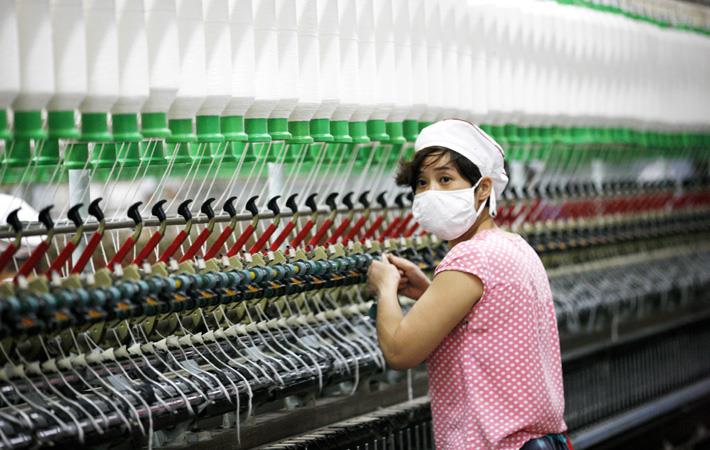Interviews
PRC textile sector witnesses fundamental transformation
06 Oct '19
2 min read

Pic: Shutterstock
Some fundamental changes are reportedly being witnessed in the Chinese textile and apparel sector that includes an intense transformation in manufacturing, a bleak picture of traditional clothing production, more rational consumer behaviour, closure of several brick-and-mortar stores and government focus on enforcement of water protection legislation.
According to official statistics released by the Chinese customs department in September, the country’s exports to the United Stated declined by 3.7 per cent year-on-year. Apart from the China-US trade war, the other reason behind this fall is this change in the industry, says a report in a Chinese newspaper.
Large-scale manufacturing is gradually fading. Over a decade back, very few factories agreed to manufacture clothing in less than 1,000 pieces and many textile factories made margins depending on massive manufacturing orders and low labour cost. This has now turned risky.
Rising mall rentals for brand stores, increasing labour cost in factories and the expense of warehousing accumulated stocks puts pressure on the traditional fashion industry.
Following NEW LOOK and Topshop, both popular UK fashion brands that exited the Chinese market, US-based Forever 21 officially announced its departure in May this year. Meters/bonwe, a leading Chinese casual wear brand, closed 1,500 stores over the past three years, and reported losses of nearly 150 million RMB for the first half of 2019.
As Chinese textile manufacturing experiences a structural transformation, more fashion companies adapt their traditional manufacturing from original equipment manufacturer (OEM) into original design manufacturer (ODM), in which the factory becomes involved in research, design, concept and engineering and attaches the buyers' label.
In small-scale production, many factories in the textile powerhouse region of Zhejiang province have transformed their manufacturing model into innovation. They still take orders for big brands but are establishing factory-owned independent brands.
China saw the first water protection regulation, the Law of the People's Republic of China on Water, which was released in 1988 and amended in 2002. However, the enforcement of water protection legislation has only recently become a priority.
According to official statistics released by the Chinese customs department in September, the country’s exports to the United Stated declined by 3.7 per cent year-on-year. Apart from the China-US trade war, the other reason behind this fall is this change in the industry, says a report in a Chinese newspaper.
Large-scale manufacturing is gradually fading. Over a decade back, very few factories agreed to manufacture clothing in less than 1,000 pieces and many textile factories made margins depending on massive manufacturing orders and low labour cost. This has now turned risky.
Rising mall rentals for brand stores, increasing labour cost in factories and the expense of warehousing accumulated stocks puts pressure on the traditional fashion industry.
Following NEW LOOK and Topshop, both popular UK fashion brands that exited the Chinese market, US-based Forever 21 officially announced its departure in May this year. Meters/bonwe, a leading Chinese casual wear brand, closed 1,500 stores over the past three years, and reported losses of nearly 150 million RMB for the first half of 2019.
As Chinese textile manufacturing experiences a structural transformation, more fashion companies adapt their traditional manufacturing from original equipment manufacturer (OEM) into original design manufacturer (ODM), in which the factory becomes involved in research, design, concept and engineering and attaches the buyers' label.
In small-scale production, many factories in the textile powerhouse region of Zhejiang province have transformed their manufacturing model into innovation. They still take orders for big brands but are establishing factory-owned independent brands.
China saw the first water protection regulation, the Law of the People's Republic of China on Water, which was released in 1988 and amended in 2002. However, the enforcement of water protection legislation has only recently become a priority.
Fibre2Fashion News Desk (DS)
Popular News
Leave your Comments
Dr. Michael Duetsch & Man Woo Lee
UPM Biochemicals and Dongsung Chemical
J Rajaraman
Canadian Solar Energy Private Limited
































-Ltd..jpg?tr=w-120,h-60,c-at_max,cm-pad_resize,bg-ffffff)





.jpg?tr=w-120,h-60,c-at_max,cm-pad_resize,bg-ffffff)
.jpg?tr=w-120,h-60,c-at_max,cm-pad_resize,bg-ffffff)






